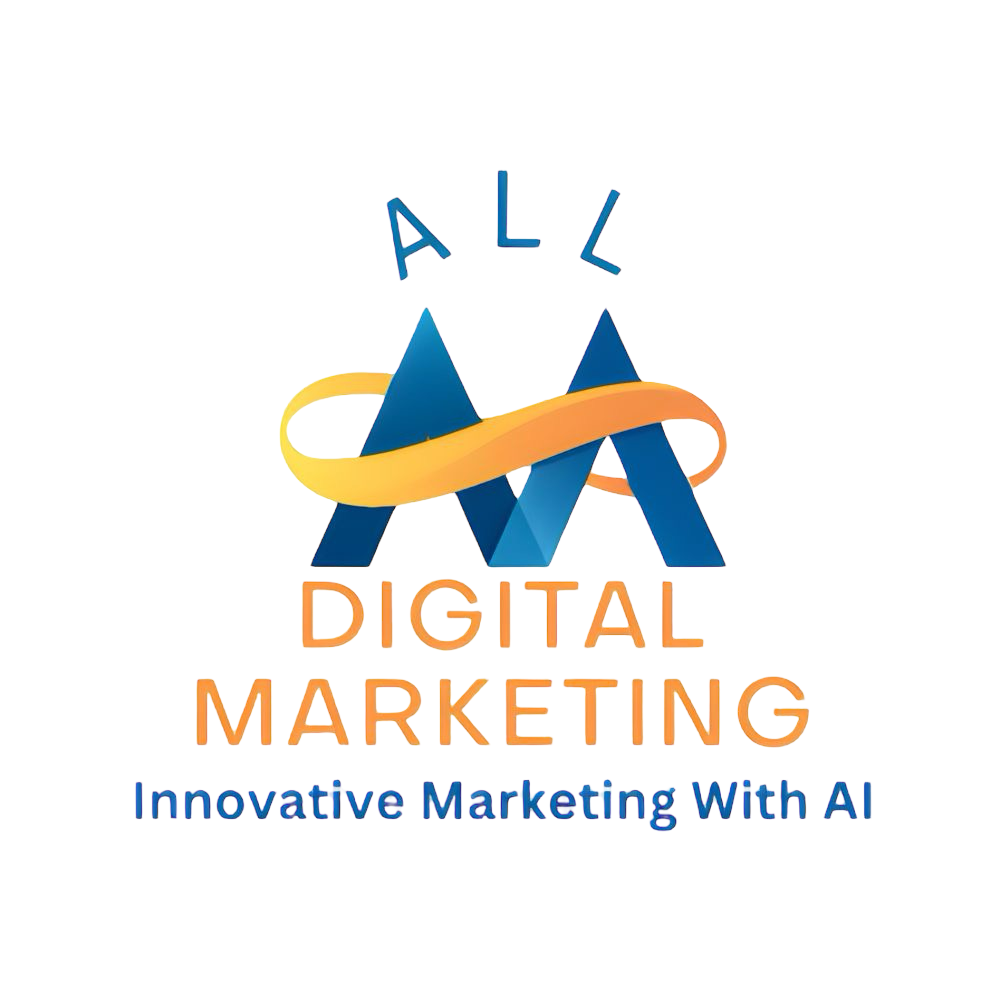Imagine landing a $20,000 client without spending a dime on advertising. Now imagine doing it repeatedly through a single marketing channel that most businesses completely overlook. This isn't fantasy—it's the untapped potential of strategic partnerships.
While everyone else obsesses over social media algorithms and paid ads, savvy entrepreneurs are quietly building empires through carefully cultivated business alliances. These partnerships aren't just nice-to-haves; they're profit-generating machines that can transform your business landscape overnight.
Key Takeaways
Strategic partnerships can generate high-value clients ($20k+) with minimal marketing costs
Both formal and informal partnerships provide "set it and forget it" revenue streams
Partnership marketing outperforms traditional channels in cost efficiency and lead quality
Successful partnerships require clear value propositions and mutual benefit
Different partnership models serve different business goals, from referral networks to co-branding opportunities
Multiple platforms like LinkedIn, Alignable, and industry groups provide fertile ground for finding ideal partners
What Are Strategic Business Partnerships?
A strategic business partnership is a deliberate alliance between two or more companies that share resources, expertise, or market access to achieve mutual growth. Unlike generic networking, these relationships are purpose-built to create specific business outcomes.
Think of partnerships as business multipliers. When formed correctly, 1+1 doesn't equal 2—it equals 10.
"Partnerships are like oxygen to growing businesses. They allow you to tap into pre-built audiences, established trust, and complementary skill sets without starting from scratch," says Harvard Business School, which found that companies with strategic alliances grow revenue 15% faster than those without.
Why Traditional Marketing Falls Short
Let's be honest: traditional marketing tactics are becoming less effective and more expensive:
Average Facebook ad costs increased 61% in 2023
Email open rates have declined to around 21.5% across industries
Cold outreach conversion rates hover at a dismal 0.3%
Meanwhile, according to BrightLocal, 85% of small business owners say that word-of-mouth referrals are their most important source of new business. That's where strategic partnerships shine.
The Hidden Power of Partnership Marketing
Unlike other marketing strategies that require constant feeding (content creation, ad spend, etc.), partnerships can create sustainable, hands-off revenue streams once established.
For example:
A business coach who partners with an accounting firm receives a steady stream of pre-qualified client referrals year after year
A web designer who creates exclusive packages with a copywriter offers more value to clients while expanding their revenue streams
A marketing agency that forms alliances with industry-specific software companies gains instant credibility with new market segments
Research from the Business Development Bank shows that SMEs engaged in strategic partnerships are 66% more likely to see increased revenues compared to companies that go it alone.
See How Digital Marketing All Can Drive More Traffic to Your Website
Brand Voice Strategy – Let our team help you create your brand voice to attract your ideal customer.
Market Growth Opp Research – Let our team show you where you can gain additional traffic that you are missing.
Local SEO - unlock more SEO traffic. See real results. Dominate your local market.
Dominate Google – Let us get your company to the top of Google.
Competitive Link Analysis – Know what your competitors are doing.
Geo-Targeting – Let us find your customers in your desired location.
Content Marketing - Our team creates epic content to be shared, generate links, and attract traffic. We know the secret recipe for success.
Paid Media Advertising - effective paid strategies with clear ROI. You pay per result with us.
Search Box Optimization —Owning a keyword in your local area is the best way to dominate your local market.
5 Types of Strategic Partnerships That Generate Real Revenue
Not all partnerships are created equal. Here are five models that actually drive business growth:
1. Referral Partnerships
This is where Company A sends qualified leads to Company B (and often vice versa), usually with a commission structure.
Real-world example: Financial advisors often form referral partnerships with real estate agents. When a client sells a home, the agent refers them to the advisor to manage their windfall. When the advisor's client wants to buy property, they send them to their trusted agent. Both professionals win without spending on advertising.
According to a Nielsen study, 92% of consumers trust referrals from people they know, making this one of the highest-converting marketing channels available.
2. Co-Creation Partnerships
Two businesses combine their expertise to create a product or service neither could offer alone.
Real-world example: HubSpot and Canva partnered to integrate Canva's design tools directly into HubSpot's marketing platform. This created added value for customers of both companies while expanding each brand's reach to the other's audience.
3. Distribution Partnerships
This is where one business gains access to another's established customer base or sales channels.
Real-world example: When PayPal first launched, it grew explosively by partnering with eBay, gaining instant access to millions of online sellers who needed payment processing.
4. Content Partnerships
Businesses collaborate on creating and promoting valuable content that serves both their audiences.
Real-world example: A local gym partners with a nutritionist to create a "Total Transformation" content series. The gym hosts the nutritionist's blog posts on their website, while the nutritionist features workout videos from the gym's trainers in their newsletter. Both parties share the content with their audiences, effectively doubling their reach.
5. Complementary Service Partnerships
Companies with non-competing but related services bundle their offerings for added customer value.
Real-world example: A wedding photographer partners with a videographer, makeup artist, and wedding planner to offer comprehensive packages that simplify the planning process for couples. Each professional maintains their business independence while benefiting from the collective marketing power.
Where to Find Your Ideal Business Partners
Finding the right partners is crucial for success. Here are the most effective platforms and communities where valuable partnerships are formed:
LinkedIn isn't just for job hunting—it's a goldmine for partnership opportunities.
How to use it effectively:
Use LinkedIn's advanced search to filter by industry, location, and company size
Join industry-specific LinkedIn Groups where your potential partners are active
Engage meaningfully with content from potential partners before making direct outreach
Use LinkedIn's "People Also Viewed" feature to discover similar businesses
According to LinkedIn's own data, users who engage in LinkedIn Groups are 5X more likely to get profile views from people outside their network, increasing partnership potential.
Alignable
Designed specifically for small business networking, Alignable is purpose-built for partnership formation.
Why it works:
The platform's sole focus is connecting complementary local businesses
Built-in recommendation features make partnership discussions natural
Geographic targeting helps you find partners in your specific service area
Users are actively seeking collaborative relationships
Small business owners on Alignable report receiving an average of 30% more local referrals after six months of active platform use.
Industry Associations and Trade Groups
These structured organizations often provide the most qualified partnership opportunities.
Best practices:
Attend both virtual and in-person events hosted by your industry association
Volunteer for leadership positions to gain visibility with potential partners
Participate in association directories that members use to find service providers
Contribute content to association publications to demonstrate expertise
A survey by the American Society of Association Executives found that 85% of business owners who are active in trade associations report forming at least one valuable business partnership through their membership.
Chamber of Commerce Events
Local Chambers remain a powerful connector for businesses serving the same geographic area.
Partnership strategies:
Focus on regular attendance rather than one-off events
Request introductions to specific types of businesses from Chamber staff
Sponsor Chamber events to gain visibility with potential partners
Join Chamber committees to work alongside potential partners
Facebook Groups
Niche professional Facebook Groups often contain the exact partners you're seeking.
How to leverage them:
Join groups where your clients are asking questions
Provide genuine value before seeking partnerships
Use the search function within groups to find specific service providers
Look for "Recommended provider" posts where members are actively seeking referrals
Shared Clients
Sometimes your best partnership opportunities are hiding in plain sight.
Action steps:
Ask your existing clients what other service providers they work with and love
Host small roundtable events with complementary providers serving the same client
Create "client success teams" with other professionals serving your top clients
Co-Working Spaces
Physical proximity creates natural partnership opportunities.
Why they work:
Regular face-time builds the trust necessary for successful partnerships
Diverse business types often occupy the same space
Many co-working spaces actively facilitate member collaboration
Informal conversations lead to partnership discoveries that wouldn't happen online
A study by Emergent Research found that 80% of co-working space members reported doing business with fellow members within their first year.
How to Create Partnerships That Actually Work
The difference between partnerships that generate real revenue and those that fizzle out comes down to execution:
1. Start with Value Alignment
Successful partnerships begin with a clear understanding of how each party benefits.
Action step: Before approaching potential partners, map out exactly what you bring to the table. Be specific about the value you offer their customers and their business.
Example value proposition: "Our social media management services would allow your web design clients to maximize the sites you build for them, increasing their satisfaction with your work while providing us with pre-qualified leads."
2. Choose Partners Your Customers Already Trust
The most powerful partnerships connect you with businesses your ideal clients already use and respect.
Action step: Ask your best customers what other products or services they use in conjunction with yours. These companies are your ideal partnership candidates.
According to the Edelman Trust Barometer, 63% of consumers need to hear company claims 3-5 times before they believe them. When a trusted partner vouches for you, that trust transfers instantly.
3. Create Clear Systems and Expectations
Vague partnerships fail. Systematic ones thrive.
Action step: Document exactly how leads will be shared, how commissions will be calculated, what the communication protocol looks like, and how success will be measured.
Example system: "Each referred client will be tracked using a unique link. Partners receive 10% of the client's first year of fees, paid quarterly. Monthly check-ins will evaluate partnership performance."
4. Deliver Exceptional Value to Partner-Referred Clients
Nothing kills a partnership faster than disappointed referrals.
Action step: Create a special onboarding process for partner-referred clients that showcases extraordinary value from day one.
A study by Bain & Company found that increasing customer retention by just 5% can increase profits by 25-95%. Properly nurturing partnership-referred clients can dramatically impact your bottom line.
5. Track and Share Results Proactively
Don't make partners wonder if the relationship is worthwhile.
Action step: Set up automatic reporting that shows partners exactly how much business the relationship has generated for both parties.
Common Partnership Pitfalls to Avoid
Even the most promising partnerships can fail if you don't navigate these common challenges:
The Enthusiasm Gap
Initial excitement fades, and without systems, so does the partnership.
Solution: Set regular check-ins and build partner engagement into your standard operating procedures.
The Value Imbalance
When one partner consistently benefits more than the other, resentment grows.
Solution: Regularly review and adjust partnership terms to ensure mutual benefit.
The Communication Breakdown
Partners stop referring when they're unsure what happened to previous referrals.
Solution: Create automated updates that keep partners informed about their referrals' status.
Real Results: Partnership Success Stories
These aren't hypothetical benefits. Here are real businesses transformed by strategic partnerships:
Local Marketing Agency
A boutique digital marketing firm created partnerships with five complementary service providers (web development, branding, photography, etc.). Within 18 months, these partnerships generated 73% of their new client acquisitions, with an average client value of $4,300 per month.
Solo Consultant
A business consultant formed strategic alliances with three accounting firms who referred clients needing operational improvements. These partnerships resulted in eight new clients in the first year, each worth $20,000+, with minimal marketing costs.
Online Course Creator
An online educator partnered with software companies in their niche, offering special course discounts to the companies' customers. The partnerships resulted in 2,300+ new students without spending on advertising, generating over $345,000 in revenue.
How to Get Started with Partnership Marketing Today
Ready to tap into the power of strategic partnerships? Follow this action plan:
Identify Your Ideal Partners: List businesses that serve your target audience but don't compete directly with you.
Create a Clear Value Proposition: Develop a specific explanation of how the partnership benefits them, their customers, and you.
Start Small: Begin with 2-3 partnerships you can manage effectively rather than casting a wide net.
Formalize the Agreement: Create a simple partnership agreement that outlines expectations, commissions, and operating procedures.
Build Systems for Success: Develop tracking, communication, and fulfillment systems specifically for partnership-referred business.
FAQs About Strategic Business Partnerships
Do I need formal contracts for business partnerships?
While informal partnerships can work, having clear written agreements prevents misunderstandings and protects both parties. This doesn't always require expensive legal documents—even a detailed email outlining terms that both parties confirm can provide basic protection.
How many partnerships should I pursue at once?
Quality trumps quantity with partnerships. Start with 1-3 high-potential relationships you can nurture properly. According to partnership marketing expert Dustin Howes, "A single well-executed partnership can outperform dozens of superficial ones."
What if my potential partners already have relationships with my competitors?
This isn't necessarily a dealbreaker. Many service providers maintain multiple partnerships to offer their clients options. Focus on your unique value proposition and how you complement rather than replace existing relationships.
How do I measure partnership ROI?
Track these key metrics:
Number of referrals received/sent
Conversion rate of partnership leads
Customer acquisition cost for partnership-sourced clients
Lifetime value of partnership-sourced clients
Time investment in maintaining the partnership
What's the best way to make initial contact with potential partners?
Warm introductions always outperform cold outreach. Use your existing network on platforms like LinkedIn to get introduced. If that's not possible, engage with their content first before making direct partnership proposals.
What if a partnership isn't working?
Have an honest conversation about expectations and results. Sometimes adjustments can revitalize the relationship. If not, professional partnerships can be ended amicably with proper notice and a transition plan for any in-process referrals.
When partnership marketing is done right, it creates what marketing strategist Jay Abraham calls "the power of preemptive positioning"—where you're no longer selling to cold prospects but being welcomed as a pre-vetted solution.
Stop chasing after every marketing trend and start building relationships that bring business to your doorstep. In a world obsessed with algorithms and ad spend, strategic partnerships might just be the most undervalued growth strategy at your disposal.
I hope you enjoy reading this blog post. If you want my team to just do your marketing for you, click here.
 Add Row
Add Row  Add
Add 








Write A Comment